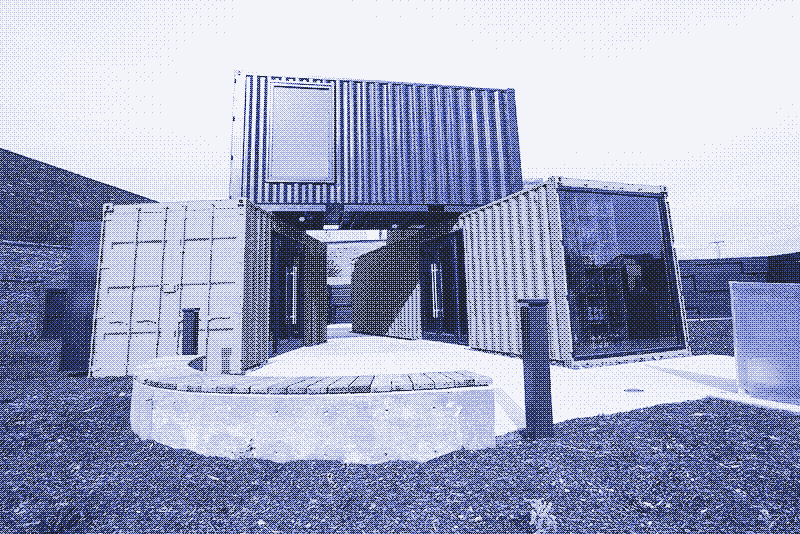
Cars, washing machines, televisions: almost everything we can buy today is assembled on the conveyor belt of some factory. But our houses are still built on the spot by a team of workers. Accompanied by lots of noise for the neighbours, and hampered by the weather. That could change: a growing number of architects see the very thing in habitable shipping containers.
It is perfectly possible to build ready-made houses in a factory, but the problem is to get them to where you want them. A single-family dwelling, let alone an apartment building, can’t be loaded onto a truck. That’s why houses are still one of the few “handmade” products, and that makes them still very expensive. Not everybody can afford his of her own house or apartment.
But some architects are trying to change that. Shipping containers are the key. They can be furnished in the factory and then transported worldwide - by train, ship or truck. Because of their standardized dimensions, they are as manageable as Lego bricks. They can be easily stacked on top of and next to each other, as high as 7 rows. Furthermore, the walls can be taken out to create larger spaces, without losing structural integrity.
Please take your room with you
The combination of mobility and modularity offers interesting possibilities. A family can start small, and extend its living accommodation systematically. For example, they can put up an extra floor when there are children on the way. In contrast, when buying a traditional house you already have to take into account future additions to the family. Two people who want to go live together, attach their containers. If they get bored of each other, they take their part of the house with them. Children that leave the house, leave together with their rooms.
Dutch company Tempohousing sells habitable shipping containers measuring 30 square meters. They cost 20,000€, the price tag of a not so big car. The container houses are delivered on site, completely fitted out with bathroom, kitchen, heating, electricity, isolation, windows and doors. Via the local brand ‘Keetwonen’, the company last year finished a student village in Amsterdam. It consists of a thousand shipping containers, distributed among 6 apartment buildings.
The village also includes a supermarket, a launderette, a restaurant and a fitness centre, all built with shipping containers. Everything was finished in one year’s time. The containers are stacked 5 rows high. This aspect pushes the price up a bit, because foundations, galleries and stairs also have to be built. Every apartment has a balcony. (UPDATE : Tempohousing is now designing hotels in Nigeria and Holland).
Mass housing
“Living in a container has a negative image”, realizes Matthijs Resinck, one of the founders of the company. “But in fact this is steel architecture with glass, which is awfully trendy. When you are inside, you never realize that you are in a container. This kind of homes is interesting for local authorities who want to offer cheap housing. Another advantage is that you can make use of land that is temporarily available. Here in Amsterdam, we will be assigned a new piece of land in 5 years.”
The container houses of Tempohousing can be inhabited by themselves, but for the time being the company only aims for mass housing. Resinck: “We plan to offer individual homes, but they will be a bit bigger. At the moment, we are designing single-family dwellings with a surface area of 60 to 120 square metres, consisting of two to four containers. If desired, these houses can be completely self-sufficient. There are for instance machines on the market that filter water from air. Also small wind turbines are available now.”
Taboo
Last year, the Spanish architect Santiago Cirugeda erected a striking apartment building with 500 square metres of floor surface, completely constructed with used containers and other waste materials. It was built in one week time, for less than 23.000 euro. But even though Barcelona has to contend with an acute shortage of small and affordable housing, the city council decided last month that the building has to disappear.
Made in China
Cheap houses could exert pressure on real estate prices. That’s good news for people who want to get on the property ladder. But it’s bad news for people who already own a house – and especially for people who own more than one. Resinck: “Traditional building companies are not exactly happy with us. They need lots of man-hours to build a house. We can immediately start with the finishing touch, because the structure already exists. Furthermore, we finish the containers in China, where labour is much cheaper. They don’t have that possibility.”